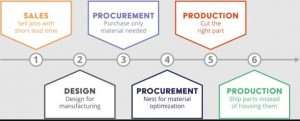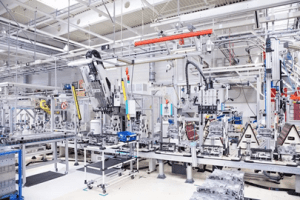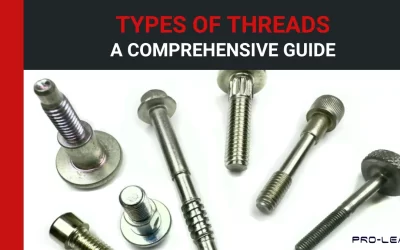What is just-in-time manufacturing?

Just-in-time manufacturing
Just in time approach reduce the cost of manufacturing by cycle time improvement, material wastage minimization, and avoids over-production (Demand surplus).
Just in time is an exceptionally organized and low-cost production approach that eliminates the shortage of resources, capital, expertise, and inventory to establish an efficient qualitative production system.
Evolution of Just in time manufacturing
A famous quote in the manufacturing world,” Need leads to the invention,” precisely describes how the Just in time manufacturing process came about. The roots of the JIT system can probably be traced to Japanese manufacturing industries (Swapnil S. Dange, 2016)
World War II hurt Japan’s manufacturing sector and its lack of resources such as capital, inventories, and professionals.
Japanese manufacturers were unable to balance the supply chain. They needed to be in a better condition to afford the large workshop, inventory, and technicians. In addition, sometimes, they used to bear losses because of over-production, and sometimes they struggled to meet demand.
To fight the obstacles of manufacturing profitability and quality, Japanese companies such as Toyota focus on converting a small number of raw materials into a small number of functional parts and products. It proves sustainability, and it is evolving continuously. Over time, more and more industries are following the just-in-time manufacturing process to optimize their performance.
Implementation of just in time strategy

Adaptation of just-in-time strategy
Just-in-time manufacturing implementation starts with the analysis of production capacity and market demand. Optimization of resource utilization and cycle time reduction is only possible when a particular manufacturing company knows everything about available resources and demand.
The following are the critical implementation steps of a just-in-time manufacturing strategy.
1 Minimize production surplus
More production than demand is always a loss for the company. It affects the supply-chain cycle and inventory space. The assessment of historical demand and demand projections can be used to optimize the required production speed and inventory.
2 Limit the production cycle time
Production cycle time When the processing parts wait for the subsequent step while production can be done further immediately, it reduces the cycle time. Many other aspects should be considered to implement the just-in-time manufacturing strategy.
3 Process Optimization
Suppose any unnecessary use of the resources should be eliminated from the process. It also includes exchanging some equipment from the process with another technology, reducing the length of the production line.
In addition, the unnecessary transportation of material and parts during production needs to be removed from the production cycle.
4 Inventory Management
Buying the raw material other than immediate Need & production demands a larger storage space. The inventory size needs to fix by considering the possibility of a demand increase and ensuring you hold some stock to manage that.
5 Strong relation with supplier
Due to a sharp rise in demand or disruptions in the supply chain for raw materials, there is a risk that orders will not be shipped on time. As a result, it’s crucial to develop trust with suppliers who always preserve safety stock.
6 Internal communication
When it comes to implementing the just-in-time manufacturing approach, internal communication is crucial. Even a tiny communication lag between departments impacts overall productivity. From planning to the customer care department, all need access to the required information and data. The use of centralized data systems like ERP/MRP is recommended.
7 Focus on small batch
Large-volume productions involve several batches, and working with a large batch to reduce the time could be a better idea. It affects the quality and also requires a more extensive inventory. Therefore, manufacturers are required to create a small batch efficiently.
8 Production scheduling
Production scheduling is one of the essential aspects of just-in-time manufacturing. All schedules should be based on the client-requested delivery date. Regarding the production process, the production unit must be extremely exact.
9 Minimize the defects and wastage
Investing time and resources in defective parts impacts the cut and the company’s reputation. The possible defects should be considered before going into the manufacturing process. The Machining setup and sequence are required to optimize in a way that reduces wastage by investing time in production planning. For example, Adopting CNC technology optimizes the machining sequence and saves time.
Advantages of Just-in-time manufacturing

Advanced manufacturing setup
Adopting a just-in-time manufacturing strategy significantly improves the overall productivity of a manufacturing firm. The changes can be felt regarding inventory management, operating cost, customer satisfaction, and risk management (Dr.Uma Bhushan, 2017).
Let’s discuss some of the significant advantages in detail.
-
- Reduction in inventory cost
Purchasing the raw material only for immediate use and limiting surplus production reduces the inventory size and cost. Removing unnecessary stocks limits the required space. With low inventory costs, manufacturers can deal with a possible demand fluctuation.
-
- Reduce the equipment’s cost
The just-in-time manufacturing approach eliminates unnecessary equipment while optimizing the production line. Less equipment means fewer operators, so it lowers the cost.
-
- Quick lead time
The organized workflow allows the manufacturer to proceed with the manufacturing stage immediately after finalizing the design. In addition, quick cycle time also contributes to lead time minimization. Generally, the lead time of the Just-in-time manufacturing approach ranges from an hour to a few days, depending on the production volume and complexity.
-
- Quality Improvement
The just-in-time manufacturing process establishes an effective system of converting a design into reality. It eliminates the complex planning required for any type of part. Avoiding large batch handling improves the quality.
-
- Risk management
The systematic production process can detect errors and mistakes very quickly and allow the operator to fix them before any possible loss. In fact, the Just-in-time manufacturing process also involves implementing a risk management strategy and identifying potential failures.
-
- Better Cash-flow
Just-in-time is also associated with financial sustainability and involves the strict implementation of a payment timeline strategy based on the required cash flow. It restricts the over-purchasing of raw materials and delays.
Businesses should be capable of handling the timeline gap of payment since there are times when they order a bulk of raw materials and only receive them from the consumer once it is delivered.
Why is Just-in-time manufacturing also beneficial for a customer?
When the operating cost of manufacturers decreases, it directly benefits the customer. It does not matter how many parts or products you ordered; you will pay less than before. Just-in-time manufacturing also enhances the quality. Customers will get more precise details. Another significant advantage is lead time. Every customer wants a quick delivery as possible. A well-organized and efficient manufacturer can offer the machining service in a short time.
Manufacturing firms with just-in-time implementation are more responsive than any other conventionally operated ones. It allows the customer to communicate about progress on the ordered project.
Disadvantages
The primary disadvantage of the just-in-time approach is potential supply chain turmoil. If the raw material suppliers cannot deliver, it disrupts the production flow. In addition, a dramatic increase in demand adds a burden since most manufacturers only stock about 10% more than forecasted demand.
Just-in-case Vs. Just-in-time
Just-in-case manufacturing is risky, especially for small companies. The more extensive finished goods inventories cannot be stocked for unexpected demands. It reduces the efficiency and profit of the business.
On the other hand, the just-in-time manufacturing strategy suggests producing small lots and avoiding large stocks. It reduces the operating cost and improves the quality. While ordering a small amount of raw material time, supply-chain disruption might only be a problem, but the “safety stock” concept solves the issue.
Conclusion
Just-in-time is a well-organized, efficient, and cost-effective manufacturing strategy. It offers a range of advantages in several domains, including quality, operating costs, inventory control, customer satisfaction, and delivery times. The manufacturers who have adopted just-in-time manufacturing can offer quality service at a reasonable price and with a short lead time.
Prolean is a dedicated manufacturing service provider following a just-in-time manufacturing strategy from day one. We have a very efficient workforce and advanced CNC technologies for various applications. With our just-in-time manufacturing service, you get precise parts at competitive prices. So, please send us your design and receive your parts at the door within a few days.
FAQ’s
What is meant by just-in-time manufacturing?
Just-in-time manufacturing is a production process where all the resources are used optimally to increase productivity. Essentially, it is a succession of rapid & effective stages from order taking through shipping.
What are the crucial steps for Just-in-time implementation?
Some crucial steps of just-in-time implementation include strong relations with suppliers, efficient processing and removal of production delays, inventory management, waste reduction, and limited surplus production.
What are the advantages of a Just-in-time manufacturing strategy?
Implementing a just-in-time manufacturing strategy improves any manufacturing project’s effectiveness, speed, and cost. Clients can receive high-quality parts in a matter of days, and manufacturers can considerably reduce their costs.
What is the relation between inventory management and the just-in-manufacturing approach?
The just-in-manufacturing strategy suggests a small inventory capable of holding only forecasted demands. It avoids ample storage space and complicated control to make it cost-effective.
Bibliography
- Uma Bhushan, D. A. (2017). Effectiveness of Just In Time Manufacturing. International Journal of Business Management and Economic Research(IJBMER).
- Swapnil S. Dange, P. P. (2016). A Systematic Review on Just in Time (JIT). IJSER.




0 Comments